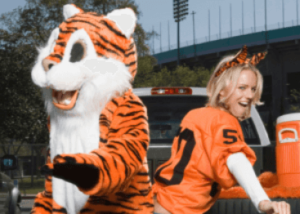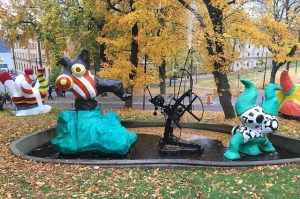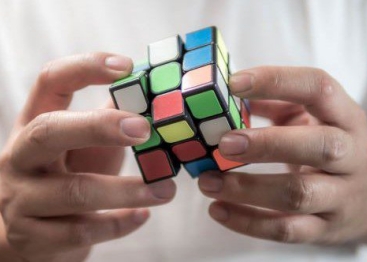10 Unique Animal Talents Found Nowhere Else in Nature
Humans have always celebrated individuality. There’s something undeniably appealing about standing out from the crowd, being the one who doesn’t follow the same path as everyone else. For many, uniqueness is more than just a trait—it’s a source of pride, a badge of honor. People who march to the beat of their own drum, who defy the norm or possess rare talents, are often admired and even envied. After all, who wouldn’t want to be the best at something? To have a skill or ability that sets you apart is to hold a kind of power, a unique place in the world.
But humans aren’t the only ones who value—or embody—uniqueness. In the animal kingdom, individuality takes on a whole new meaning. While many animals share common traits or abilities, there are some creatures that stand out not just because they’re rare, but because they have skills or characteristics so extraordinary that only one organism on Earth can claim them. These unique abilities make these animals truly one-of-a-kind, marvels of evolution and nature.
From the bizarre to the breathtaking, the animal world is full of creatures that remind us just how diverse and extraordinary life can be. Whether it’s a skill no one else has or a trait that makes them completely unlike anything else, these animals are living proof that uniqueness isn’t just a human concept—it’s a universal phenomenon. And in the wild, it’s often the key to survival.
10. Sea Sponges Can Literally Rebuild Themselves From Scratch

When we talk about resilience in nature, our minds often go to armored beetles, deep-sea creatures, or something with a thick hide and a fierce bite. But none of them hold a candle to the unassuming sea sponge—a creature so biologically unique, it almost rewrites what we think of as survival.
At first glance, a sponge looks like something barely alive. No eyes, no brain, no central nervous system. Just a squishy, porous blob stuck to a rock. But here’s the wild part: you can completely obliterate a sponge—tear it apart, break it down into individual cells—and it won’t just survive… it’ll come back together.
Seriously.
Researchers have shown that if you pass a sponge through a fine mesh, reducing it to what looks like a pile of gooey cells, those cells will crawl back to each other, recognize one another, and reassemble into a fully functional sponge. No blueprint, no manual—just a kind of biological GPS that tells each part where to go.
It’s a trait not found in any other multicellular organism, and it’s baffled scientists for decades. Some have even compared the process to the T-1000 from Terminator 2, except it’s real, and it’s happening under the sea.
This ability—technically called cellular totipotency—has made sponges a subject of fascination in fields like regenerative medicine and evolutionary biology.
9. Elephants Can Understand Pointing Without Being Trained
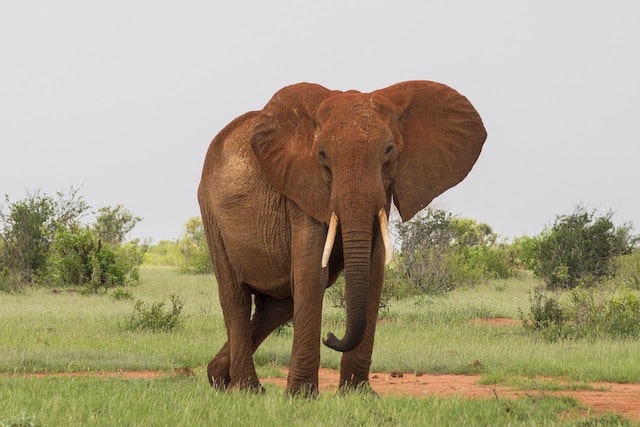
Have you ever tried to point something out to your pet? Maybe you’re trying to show your cat a toy or guide your dog toward a treat. But let’s be honest—how often does it actually work? Cats, if they’re feeling generous, might give your outstretched finger a curious sniff or a rub. Dogs, unless they’ve been trained, might just stare at you like, “What now?” It turns out that pointing is a uniquely human gesture, one that most animals don’t naturally understand.
That’s because pointing isn’t something animals instinctively link to meaning. Humans use it constantly—to direct attention, share information, or simply communicate. But for most animals, a pointed finger is just… a finger. Cats might ignore it entirely, and dogs might look at you like you owe them an explanation. Even chimpanzees, our closest animal relatives, struggle to grasp the concept of pointing without extensive training.
Enter the elephant, a creature that continues to surprise us with its intelligence and social complexity. Unlike most animals, elephants have a natural ability to understand pointing—yes, even without being trained. Yes, you read that right. Elephants can look at a human pointing and immediately know what it means.
How is this possible? It likely comes down to their complex social systems. Elephants are highly intelligent and deeply social animals. They use non-verbal gestures, like trunk movements, to communicate with one another in the wild. This ability to interpret gestures has likely evolved over time, allowing them to work together as a herd and respond to each other’s signals.
Research has shown that elephants don’t just recognize pointing—they spontaneously understand it. In experiments, elephants were able to use a human’s pointed gesture to locate food, even when no prior training had been given. This is something that even chimpanzees, with whom we share a closer evolutionary link, struggle to do. Elephants, however, seem to grasp the concept almost instantly, as if they’ve been reading our minds all along.
It’s a fascinating reminder of just how unique elephants are. Their intelligence, emotional depth, and ability to understand human gestures set them apart from most other animals.
8. Pronghorns Are the Only Animal With Horns That Branch and Shed Like Antlers
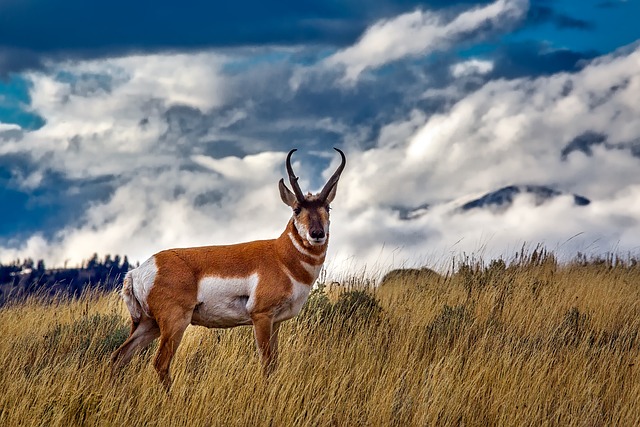
When it comes to animal headgear, there’s a lot of variety out there. From the majestic antlers of moose to the sharp horns of bighorn sheep, these features are as unique as the animals that wear them. But one animal stands out in this category—the pronghorn. It’s a true oddity in the animal kingdom, and here’s why.
First, let’s clear up the difference between horns and antlers. For most animals, horns are permanent. They grow as part of the skull, with a bony core covered by a keratin sheath (similar to human fingernails). Once they grow in, they stay for life—no shedding, no regrowing. Antlers, on the other hand, are a whole different story. They’re made entirely of bone, grow as extensions of the skull, and are typically found in males. Antlers are shed and regrown every year, often growing larger and more elaborate over time.
But here’s where things get weird. Most animals with horns don’t branch. Take bighorn sheep or goats, for example—their horns grow in a single curve or spiral and never branch out. And most animals with antlers—like elk, moose, and deer—don’t have horns at all.
Enter the pronghorn, a creature that defies these rules. Pronghorns are the only animal in the world that has horns that branch and shed like antlers. Yes, you read that right. Their horns are a hybrid of both worlds.
Here’s how it works: pronghorns grow horns that are similar to antlers in one key way—they branch. Unlike the smooth, curved horns of bighorn sheep, pronghorn horns split into two or more tines, giving them a distinctive forked appearance. But unlike antlers, which are made entirely of bone, pronghorn horns have a bony core covered by a keratin sheath, just like regular horns.
And here’s the kicker: pronghorns shed their horns every year. After the breeding season, the horns fall off, and new ones regrow. This is something no other horned animal does. It’s a behavior more typical of antlered animals, but the form of the horns remains true to their horn-like origins.
7. Firehawks: The Wild Birds That Literally Use Fire to Hunt
(The only animals known to wield flames as a hunting tool)
In the heart of Australia’s rugged landscapes, there’s a bird that doesn’t just watch wildfires—it starts them. Known collectively as “firehawks,” these birds aren’t a single species, but a group of raptors, including the Black Kite, Whistling Kite, and Brown Falcon, that have stunned scientists and locals alike with one unbelievable skill: they use fire as a weapon.
The stories didn’t start in laboratories or with researchers. Indigenous Australian communities have long told tales of these birds—calling them sacred creatures that gifted fire to humans. For generations, people believed these birds were simply a part of mythology. But as modern studies and eyewitness accounts began piling up, it became clear: these stories held a remarkable truth.
What firehawks do is both brilliant and unsettling. During bushfires, they soar overhead, watching the chaos below. As flames race through the dry underbrush, terrified small mammals, insects, and reptiles flee for safety—straight into the firehawks’ path. But that’s not the wildest part.
These birds don’t just follow fires. They create them. Yes, really. In multiple documented events, firehawks have been seen grabbing smoldering sticks or embers from burning areas, flying over firebreaks or roads, and dropping them in dry grass to spark fresh flames. Then, they circle back and wait for prey to emerge. It’s strategic. It’s intelligent. It’s terrifyingly effective.
No other non-human animal has been confirmed to use fire in such a deliberate and tactical way. That makes these Australian firehawks a true outlier in the animal kingdom—and one of the few examples of tool use involving fire.
This behavior not only challenges our assumptions about animal intelligence, but also deepens our understanding of the complex relationship between wildlife and natural elements. Who would have thought that something as destructive as fire could be turned into a hunting strategy by a creature that can’t even make fire on its own?
6. Ants Are the Only Creatures to Have Domesticated Another One
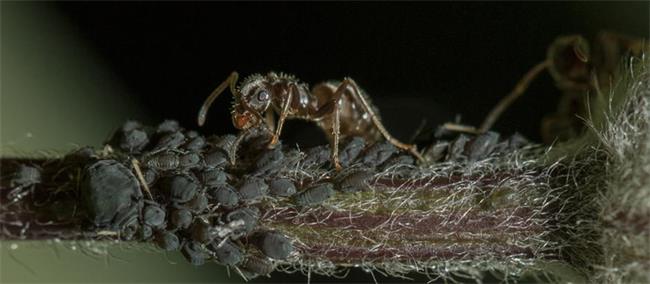
When we think of domestication, humans are usually the first thing that comes to mind. After all, we’ve been domesticating animals for over 10,000 years, shaping the course of civilization in the process. From dogs and goats to horses and chickens, humans have mastered the art of taming and farming other species to meet our needs. But here’s the surprising twist: ants have been doing it too—and they’ve been at it for far longer than we have.
Yes, you read that right. Ants, those tiny, industrious insects, are the only other creatures on Earth known to domesticate another species. And their “livestock”? Aphids.
In a way that mirrors human farming, ants herd aphids much like we herd cattle. Aphids feed on plants and produce a sugary substance called honeydew, which ants eagerly consume. The ants act as shepherds, guiding the aphids to the juiciest parts of the plant to maximize their “milk” production. When a plant in one area gets depleted, the ants will move the aphids to a new spot, ensuring a steady supply of honeydew.
But the relationship doesn’t stop there. Ants go above and beyond to care for their aphid “cows.” They protect them from predators, shield them from harsh weather, and even carry them into their nests when it’s cold. In return, the aphids allow the ants to “milk” them by tapping into their honeydew glands. It’s a win-win situation, with the ants getting a reliable food source and the aphids gaining protection and care.
What’s even more fascinating is that some ant colonies have specialized roles for this relationship. Just like in human farming communities where some people tend to crops while others care for animals, certain ants are designated as ”farmer ants.” Their sole job is to tend to the aphids, herding them, milking them, and ensuring their survival.
But here’s where it gets even weirder. Not all ants farm aphids for honeydew. Some species of ants engage in what scientists call predatory mutualism. These ants live in massive colonies and “farm” insects similar to aphids, but instead of farming them for honeydew, they farm them for meat. Researchers have found that these ants occasionally eat some of the insects they protect, essentially treating them as both livestock and prey.
This level of complexity in the ant-aphid relationship highlights just how sophisticated their societies are. Ants aren’t just scavengers or lone hunters—they’re master farmers, caretakers, and protectors, with intricate systems that rival human farming practices in their own way.
5. Sea Slugs: The Animals That Can Photosynthesize Like Plants
We all know the basic science: plants harness sunlight through photosynthesis, while animals rely on consuming food. It’s one of the clearest dividing lines in the natural world—until you meet the sacoglossan sea slug. This unassuming marine creature casually blurs the boundary between flora and fauna in the most jaw-dropping way imaginable.
While humans and other animals fuel their bodies with food, sacoglossan sea slugs have figured out how to do both—eat and photosynthesize. That’s not a typo. These slugs can actually generate energy from sunlight, just like a leaf.
But how? It’s not because they were born with built-in solar panels. The secret lies in their diet. These sea slugs feed on certain types of photosynthetic algae, and during the process, they hijack the algae’s chloroplasts—the parts responsible for capturing light energy. Once inside the slug’s tissues, these chloroplasts continue to function, converting sunlight into usable energy for their new host.
This process, known as kleptoplasty, is like biological recycling on a cosmic level. Imagine if you could eat a salad and gain the ability to sunbathe for sustenance for the next few months. That’s essentially what these slugs are doing.
Even more astonishing, the chloroplasts remain active for weeks or even months, nestled inside the slug’s body. Scientists still aren’t entirely sure how the slugs keep the chloroplasts alive and operational for so long. Normally, chloroplasts rely on support from the rest of the plant cell, but in the slugs’ case, they appear to function independently—almost as if they don’t care who owns them.
This peculiar biological partnership raises a lot of questions about the boundaries of life and evolution. Are these sea slugs animals with plant powers? Or are they something entirely different? Either way, they’ve mastered a survival strategy that’s both elegant and unexpected.
4. Owls Can Rotate Their Heads Over 400 Degrees—And It’s Not a Myth

You’ve probably seen it before—an owl slowly twisting its head all the way around, like something out of a horror film. It’s eerie, fascinating, and kind of mesmerizing. But what if I told you that this isn’t just some cool visual trick? In fact, it’s one of the most extreme and biomechanically impressive adaptations in the animal kingdom.
Let’s clear up one common misconception first: owls don’t just turn their heads 180 degrees. That’s child’s play. In reality, owls can rotate their heads more than 270 degrees in each direction, giving them a combined rotation range of over 540 degrees. That’s not just a full circle—it’s a circle and a half. Wrap your brain around that.
Why this bizarre superpower? It turns out, it’s a matter of necessity. Unlike humans, owls have fixed eye sockets, meaning they can’t move their eyes within their skull. So if they want to track movement, scan the surroundings, or keep prey locked in their field of view, they have no choice but to move their entire head.
But how do they do it without snapping their necks or cutting off blood flow to the brain? That’s where things get really wild. Owls have adapted vascular systems that allow blood to flow even when the head is turned sharply. According to Johns Hopkins researchers, their arteries have built-in reservoirs that ensure oxygen continues to reach the brain during extreme rotation.
Structurally, owls also have fewer and more flexible neck vertebrae—14, to be exact—compared to humans’ 7. And while humans have two points of articulation between skull and spine, owls have just one, making the motion smoother and more elastic. That single pivot point gives them their signature twist-and-glide motion.
And as for their rival, the tarsier? Sure, it can twist its head nearly 180 degrees. But owls? They lap that range—and then some.
3. Pangolins Are the Only Mammals With Scales
When it comes to the animal kingdom, there’s no shortage of oddities—creatures that defy expectations and blur the lines of classification. Take the platypus, for example. It’s a mammal, but it lays eggs. Or the lungfish, which can breathe air and survive out of water for days. But one of the strangest and most fascinating creatures is the pangolin. Why? Because it’s the only mammal in the world with scales.
Yes, you heard that right. Pangolins are covered in keratin scales, the same material that makes up human hair and fingernails. These scales aren’t just for show—they serve a vital purpose. When threatened, pangolins use their tails to defend themselves, swinging them like clubs to fend off predators. And if that doesn’t work, they have one more trick up their sleeve: they roll into a tight ball, tucking their soft underbelly inside and leaving their impenetrable scales on the outside. It’s an effective defense mechanism, making them incredibly difficult for most predators to attack.
But despite their tough exterior, pangolins are in serious trouble. They’re one of the most trafficked mammals in the world, targeted for their meat and scales. In some cultures, pangolin scales are believed to have medicinal properties, and their meat is considered a delicacy. This illegal trade has pushed pangolin populations to the brink of extinction in many areas.
Studying pangolins is no easy task, either. They’re notoriously difficult to keep in captivity, often suffering from stress and health issues outside their natural habitat. In fact, we know so little about them that scientists aren’t even sure how long pangolins live in the wild. Their lifespan remains one of the many mysteries surrounding these elusive creatures.
What makes pangolins even more unique is that their scales are unlike anything else in the mammal world. While other mammals rely on fur or skin for protection, pangolins have evolved this armor-like covering that sets them apart. Unfortunately, this very trait has also made them a target for exploitation.
2. The Firefly Squid: A Tiny Deep-Sea Creature That Glows Using Protein Crystals
If there’s one creature that seems plucked straight from a sci-fi movie, it’s the firefly squid—a shimmering, deep-sea marvel that lights up the ocean like a living constellation. While many marine organisms have mastered the art of glowing, this squid’s technique is something truly one-of-a-kind.
Most of us are familiar with bioluminescence through fireflies in the summer or glowing plankton in the sea. Typically, the glow comes from chemical reactions inside the body, or in the case of some squids, from bacteria living in symbiosis with them. But the firefly squid? It takes a very different route.
This small squid, found mostly in the waters off Japan’s Toyama Bay (where it even has its own annual light festival), doesn’t borrow light from bacteria. Instead, it produces its own radiant blue light—and not just anywhere, but through specialized organs at the tips of its tentacles and across its body. And here’s the kicker: the squid generates this glow using protein crystals, making it the only known animal to do so.
Think about that. While a firefly’s glow is powered by luciferin and luciferase (enzymes that react with oxygen), the firefly squid builds tiny crystal structures out of proteins that direct and amplify its glow, similar to a biological flashlight. These glowing spots are called photophores, and when the squid swims in the dark depths, they flicker like stars.
What’s even more fascinating is the purpose behind the glow. Scientists believe it’s used for everything from camouflage to communication, and possibly even for confusing predators or attracting prey. Imagine being a tiny fish in the dark ocean, suddenly surrounded by twinkling blue lights—you wouldn’t know whether to run or stare in awe.
1. A Salmon Parasite Is the Only Animal That Doesn’t Need Oxygen
When you think about life on Earth, one thing seems universal: breathing. Whether it’s through lungs, gills, or even skin, animals need oxygen to survive. It’s a basic rule of life—until you meet Henneguya salminicola, a tiny parasite that is rewriting the rules.
Discovered in 2020, this microscopic creature is unlike anything scientists have ever seen. It’s a multicellular organism, meaning it’s made up of more than one cell, but it doesn’t need oxygen to survive. That’s right—this parasite is the only known animal on Earth that can live without breathing.
So, how does it work? Henneguya salminicola lives in the flesh of salmon, where it has adapted to thrive without oxygen. Instead of relying on oxygen to produce energy, it steals nutrients directly from its host. Think of it as a freeloader that skips the line at the energy buffet, bypassing the need for oxygen entirely.
Most animals, including humans, rely on mitochondria—tiny structures in our cells that convert food into energy through a process called cellular respiration. Mitochondria need oxygen to function, but Henneguya salminicola doesn’t have any mitochondria at all. That’s right, it’s missing the very thing that powers most life on Earth. Without mitochondria, the parasite doesn’t need to worry about energy production or copying genes for respiration. It’s like a minimalist who’s stripped life down to its bare essentials.
Interestingly, Henneguya salminicola is related to jellyfish and coral, both of which are simple organisms that don’t have complex respiratory systems. But even they rely on oxygen in some way. This parasite takes things a step further, evolving to survive in a way that’s completely unique among animals.
While this discovery is fascinating, it also raises big questions about the nature of life itself. If an animal can survive without oxygen, what else might be possible? Could there be other organisms out there that have evolved similarly extreme adaptations?
For now, Henneguya salminicola remains a mystery, a tiny parasite that challenges everything we thought we knew about life on Earth. It’s a reminder that even in the most unexpected places, nature continues to surprise us—and sometimes, it leaves us questioning the very rules we thought were unbreakable.







